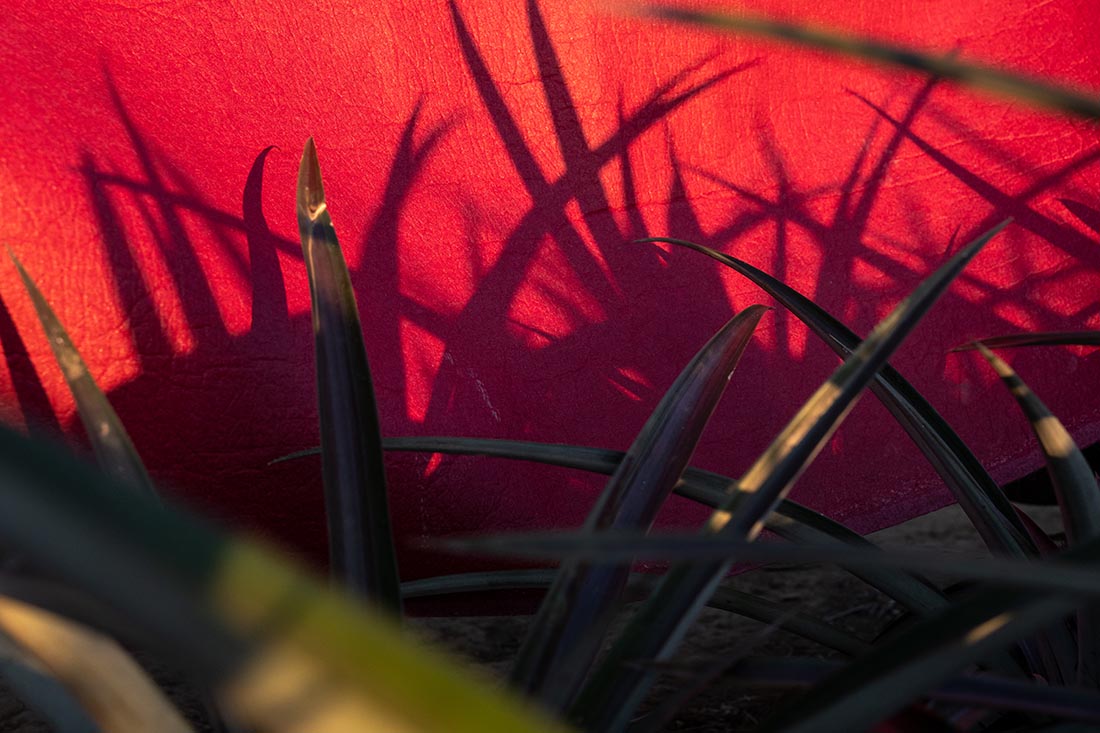From Fruit to Farmer to Fiber, Benefits of Piñatex® are Far Reaching
When you think of a pineapple, what comes to mind is hospitality, luxury, status, and good fortune. Sustainable plant-based textiles do not readily come to mind, but that is exactly what Ananas Anam, the makers of Piñatex®, want you to consider. In fact, the luxury plant-based nonwoven materials developed by company founder Dr. Carmen Hijosa utilizing pineapple bio-waste brings all that the fruit represents into any end use application, and more. The material provides an array of benefits to product developers, offering a unique commercially produced textile that has positive social and economic impacts, while also maintaining a low environmental footprint throughout its life cycle.
The company has achieved B-Corporation certification since 2020, which means they maintain high standards of verified performance, accountability, and transparency on factors from employee benefits and charitable giving to supply chain practices and input materials.
The story of Ananas Anam began while Dr. Hijosa, a leathergoods expert, was consulting on the Philippines leather export industry in the 1990’s. Disturbed by the environmental impact of mass leather production and chemical tanning, she realized this should not continue but knew that PVC alternatives were not the solution. She was driven to research a sustainable alternative.
Inspired by the abundance of natural resources, including the use of plant fibers in traditional weaving such as the delicate Barong Tagalog garments, she sought out to create Piñatex®, and now, utilizing the same raw material, pineapple leaf fiber, the company has expanded into offering a second product, Piñayarn.
Piñatex® is used across fashion, accessories, upholstery and automotive industries, and has been used by over 1000 brands worldwide including Hugo Boss, H&M and the Hilton Hotel Bankside. With the new product complimentary to Piñatex, Piñayarn can help create a wider positive impact, serving more industries for new and different products.
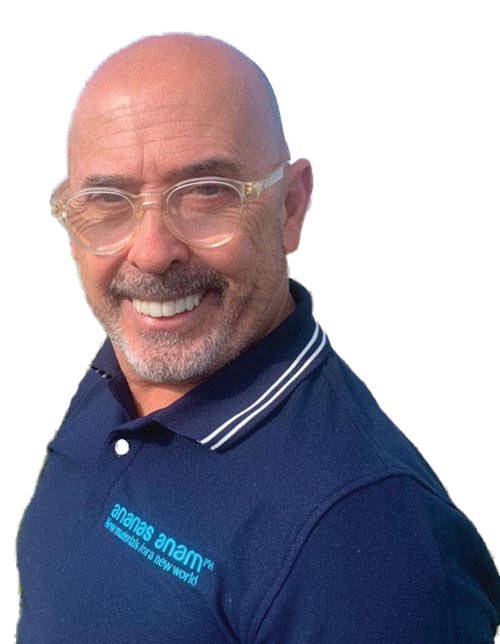
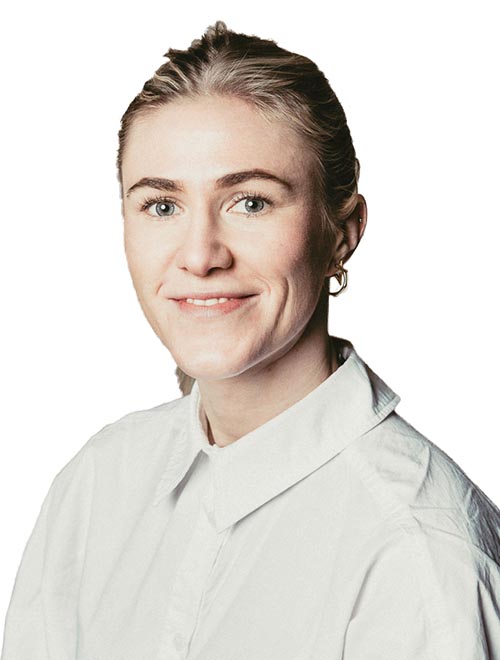
Here is the inspiring story told by company executives Josep Taylor, Managing Director of Fibre Processing Plant and Melissa Braithwaite, Piñayarn Product Development Manager.
International Fiber Journal: Tell us about Ananas Anam founder Dr. Carmen Hijosa and her work.
Josep Taylor: As as expert in the leather business, Carmen was consulting for the World Bank. She visited the Philippines and was distressed by the conditions she witnessed. She started visioning a more sustainable way of production, for both the people and the planet. There is not much change you can make with real leather; so, she began researching natural fibers in the Philippines on creating a
sustainable replacement.
As a result of her extensive research Hijosa began development of Piñatex® in 2011, filing a patent for the process of transforming fiber into an alternative leather and other textiles.
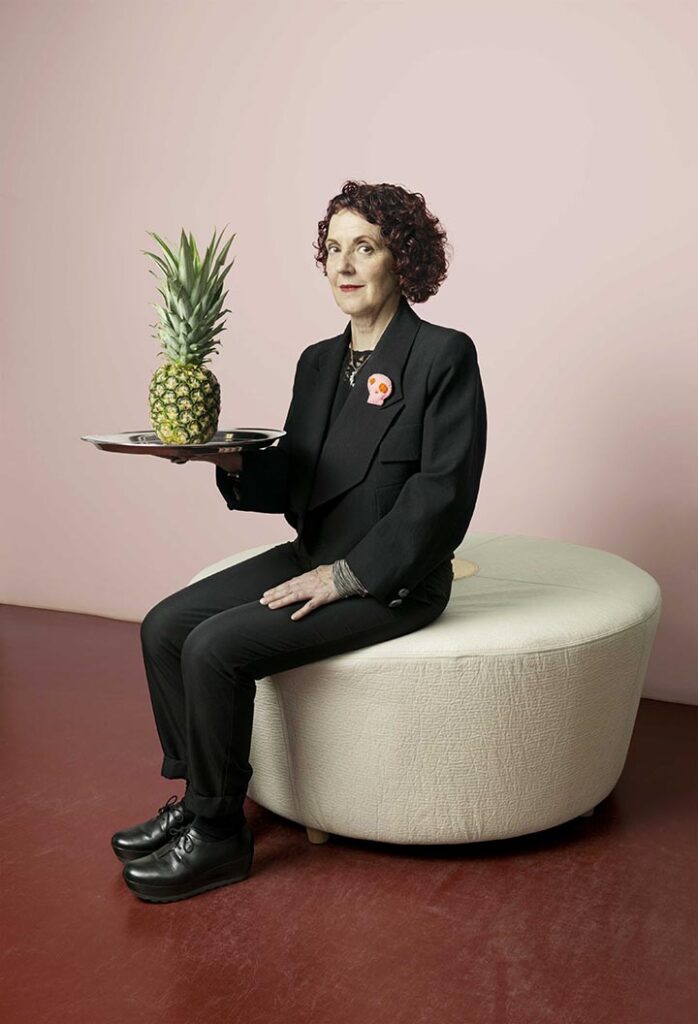
Melissa Braithwaite: Piñatex® officially launched in 2014 and was first commercialized in 2016. Dr. Carmen saw the opportunity to utilize pineapple harvest waste – instead of them being burned, which speeds up the preparations to plant again for the next pineapple fruit harvest. Utilizing this waste also provides an opportunity for a second stream of income for communities of farmers.
Pineapple fibers had traditionally been used for textiles generations prior for hundreds of years, mainly in raw form. With the Philippines as a global pineapple producer, Dr. Carmen concentrated on the knowledge of the people to help develop these plant-based textile solutions.
IFJ: Share about the company’s facilities.
Taylor: The corporate headquarters is in the UK. Our primary production facility was established in the Philippines to be near the pineapple plantations. Mid-2021, we began development of the factory in Spain as a growth strategy. We are positioned to serve our customers and nearby our suppliers. Plant production began in July 2022.
We have since divided the company into different production units. For instance, in the Philippines they work on developing the nonwoven. In Spain, we prepare the fiber to get carded and to become the newest product line, Piñayarn.
IFJ: How do you work with the farmers on the fiber extraction?
Braithwaite: First, let’s look at the lifecycle of the pineapple. It’s important to know that we partner with farming cooperatives, where their first business priority is the fruit harvest. So, we are never competitive with fruit production. We collaborate with chosen farming cooperatives to extract the fiber from the leaf waste after fruit harvest.
Quite often, the pineapple leaves get burnt to remove field waste and prepare for a second fruit harvest. Utilizing the field waste helps to reduce CO2 emissions. We work with them to extract fiber, using a decorticating machine as part of their farming practices. After extraction, the fibers get washed in water and then are dried naturally in the sun. At this point, Ananas Anam buys the fibers. The fibers get sent to our facilities in the Philippines or Spain to be mechanically processed to textile grade standard, before being processed into either Piñatex® or Piñayarn.
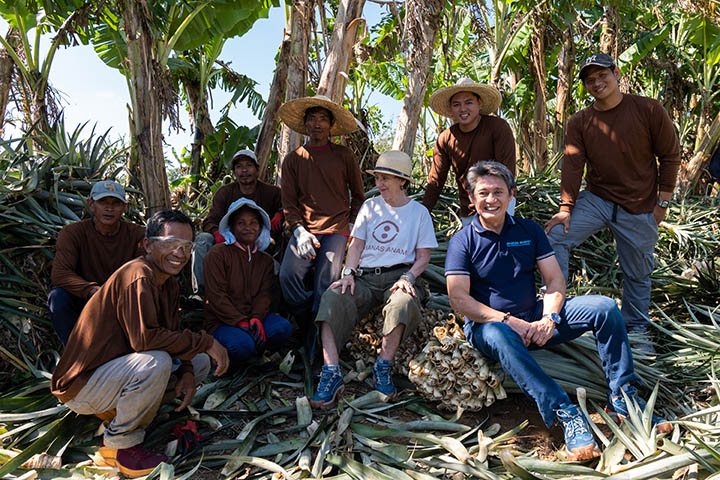
We work with the farming cooperatives through the whole process for social and quality reasons. We help them with their training, and sometimes provide the machinery. We ensure that the work sites are safe, and that they know all the correct ways in which to extract fibers.
While the process is labor intensive, we’ve already had quite a lot of progress in automating our farming machinery. For us, the most beneficial positive impact we make is to provide an abundance of jobs in these rural communities.
It is important to note that in every step in our process, we utilize waste. For example, any waste from the extraction process is then repurposed as bio content for soil nutrition. It is beneficial for the plants to get the positive nutrients back into the soil, so it’s a closed loop system.
Taylor: We partner with several farming co-operatives and farms and provide over 550 jobs. The company is growing, and our sources are growing, including farmers now in Bangladesh and Africa. It is most important to our company to have a positive social impact. The entire family – except children – can work on fiber extraction which is beneficial for their livelihood. Conditions of the workers is our priority, so we conduct audits to check compliance with the agreed upon rules.
IFJ: Tell us about your purification process?
Taylor: Once we have fibers, we treat the fluff-like pineapple leaf fiber (PALF) with natural enzymes to remove any impurities. We don’t use any chemicals or bleach, so this sets us apart from others who do. I would say that to my knowledge we are the only ones that are doing this enzymatic process. Then, we cut them to the length dependent on the end use.
For the drying process, while we have industrial dryers in Spain, in the Philippines we are lucky to have the sunlight or drying ovens. We rely on natural sunlight in our facilities which is more sustainable in terms of energy. With sunlight it might take longer, but we’re not using any resources except the sun and the air.
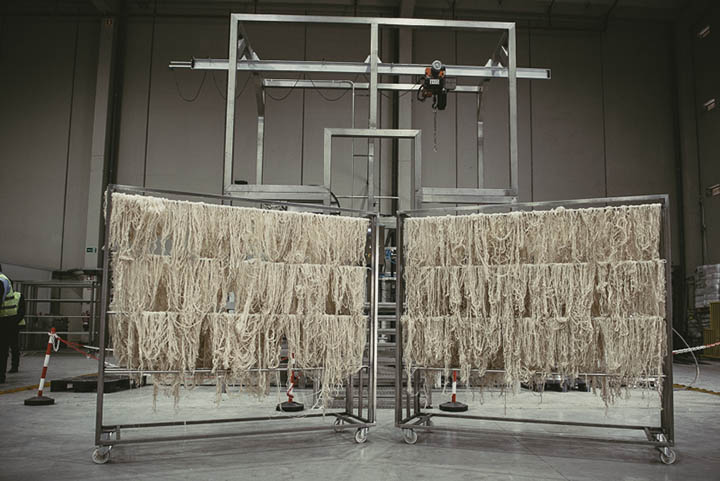
IFJ: How much do you produce and how many brands are using the fiber?
Taylor: We are producing, last year, about 260 tonnes. We have clients in over 90 countries and many brands we work with, whom we co-brand with marketing. For instance, most notably Nike® launched the Happy Pineapple shoe brand. Hugo Boss, H&M and the Hilton Hotel Bankside are some other large brand partners.
Also, it’s a plus especially for smaller brands to distinguish themselves, and associate with the name of Piñatex®, because it provides the certainty that we are vegan, chemical free, we are traceable, and totally sustainable.
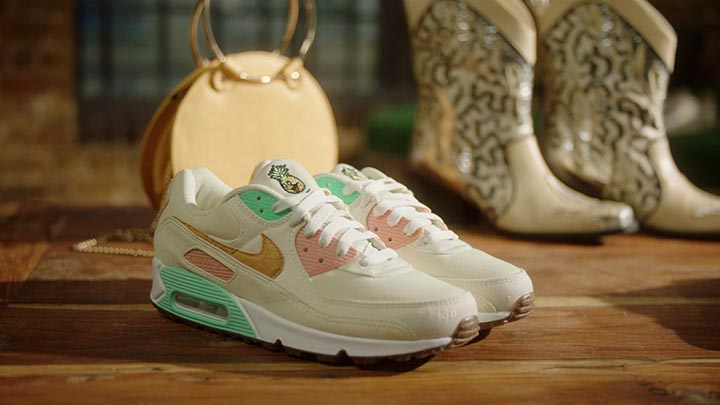
IFJ: What are GOTS certified pigments that you utilize?
Braithwaite: That means we use water and energy-efficient pigments and have achieved Zero Discharge of Hazardous Chemicals (ZDHC) compliance. To make the Original, Pluma and Mineral collections, the Piñafelt is colored using GOTS certified pigments. Then a resin top coating is applied to give additional strength, durability and water resistance. A foil is heat pressed on to create the Metallic collection and a high solid PU transfer coating is used to create Piñatex® Performance and Light.
IFJ: What are Ananas Anam collections?
Taylor: Piñatex® has five collections. Original, Mineral, Metallic and Performance all have a non-woven felt backing, but slightly differ with the top coating and finished look. Piñatex® Light has a knitted backing and is the thinnest collection to date. End use and application include footwear, accessories,
apparel and interiors.
IFJ: What is the Piñayarn and how did it come about?
Braithwaite: Piñayarn came about in 2020 when the company won a grant from the UK government through UKFT to produce sustainable PPE alternative (facemasks) made from the same pineapple leaf fibers as Piñatex®.
To create these facemasks, we had to create yarn to an industrial standard and therefore we needed to create a new supply chain for the company, and on-board suppliers and producers for this yarn and facemasks.
There had been some questions on how Piñatex® can be used in a wider variety of products to offer more flexibility and lighter weight. So, essentially Piñayarn grew to be the second product offering to compliment Piñatex® and to supply our customers with the potential of creating more products using this yarn that Piñatex® wouldn’t have been able to supply at that time.
It’s also an alternative to the yarns that are already on the market for a higher environmental impact. The same clients that use that use Piñatex® are interested and use Piñayarn.
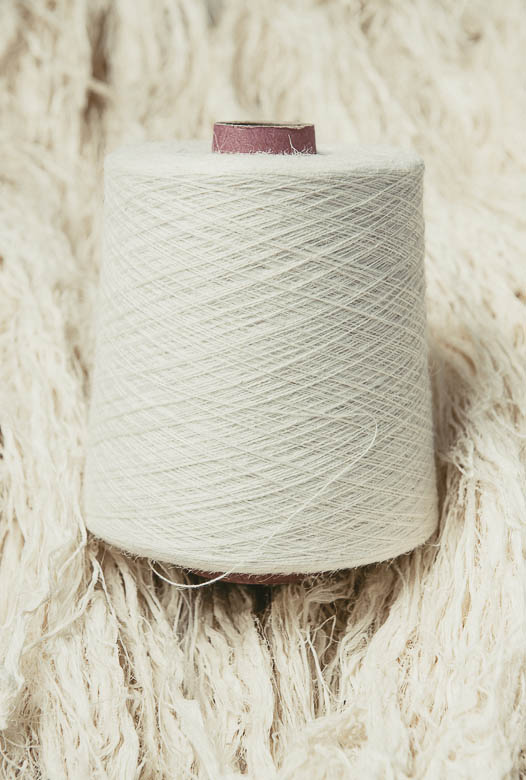
IFJ: How do you help companies with their sustainability stories?
Taylor: We have a great opportunity to help grow a sustainable mindset. Many companies are not going to change overnight, but there is lots of interest to have lower-impact materials. It takes time.
Our business model helps to unlock the potential of natural fibers and bring socio-economic stability to rural areas of the Philippines and Bangladesh. We are always looking for brand partners and companies to align with our vision both socially and ecologically.
Braithwaite: We make it quite easy for brands because they all have various ways of how they view sustainability, and how they want to market their products. We have a full Life Cycle Analysis for both of our products – Piñatex® and Piñayarn. Our LCA measures the full impact of the product, from the carbon footprint, water usage, to toxicity, and transport emissions. We work closely with our customers sharing data on our products to help them calculate the impact of their end products.
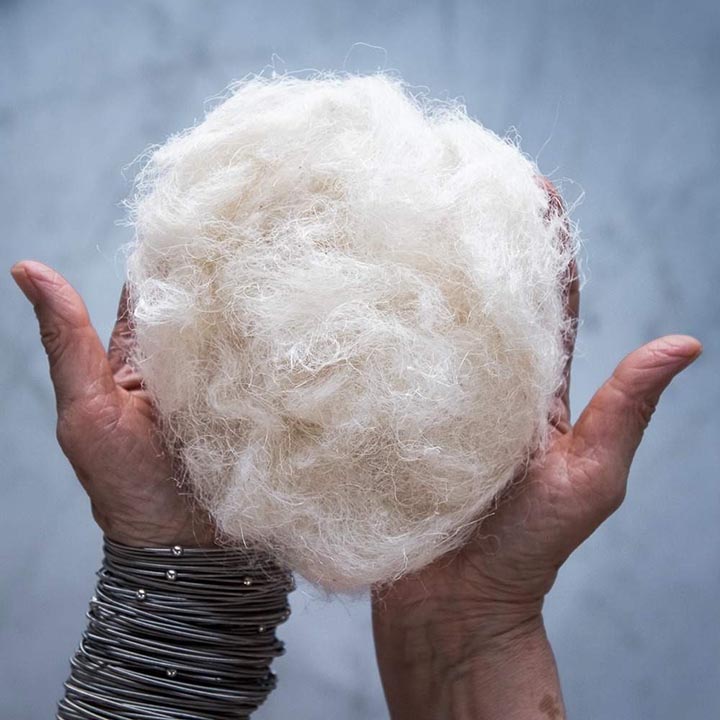
IFJ: How do you view the sustainability adoption rate of the industry?
Taylor: It is pure economics. It is a change of model. It takes time. Everybody is aware the world needs to change. A company like ours, we see the future. We only have one planet, and we must take care of it. Corporations understand that they must change, but they still have the economic part to factor in. It is the future.
The consumer is the one who chooses which way to go, this is the reality. The consumer still does not know all information that we know in this industry. Carmen says, we must teach school children the importance of sustainability and to respect the planet, as well as to be more conscious on new ways of producing things.
Braithwaite: On product development, it is easiest sometimes to work with small brands and companies because they can react to change much quicker and easier. I also think adopters of nonwoven and plant-based non-woven materials need to appreciate the excellent qualities Piñatex® offers, and not compare it to leather. These materials are not going to react the same as protein-based leather goods.
I agree, education is key. Also what is essential, is the need for the textile industry to be more closed loop from the start. We know that microfibers and waste streams are a huge problem for any sort of textiles. Fully closed loop systems would help, as well as the ability to compost materials – that’s the future of sustainable fabrics.
Piñatex® is used across fashion, accessories, upholstery and automotive industries, and has been used by over 1000 brands worldwide including Hugo Boss, H&M and the Hilton Hotel Bankside.
IFJ: What are the plans for the company?
Taylor: Our edge is that we can trace producers and partners in our supply chain, this is so important. Others don’t have this kind of engagement with the landowners or fiber producers.
This is a business. We want to show our customers that when they choose us as a supplier, this is a good business decision.
Braithwaite: We listen to the customers and what they need. We ultimately make raw materials for our customers to make their products. But, along the way, if we can somehow make a sustainable difference for our customers by using our material, that’s our future.


